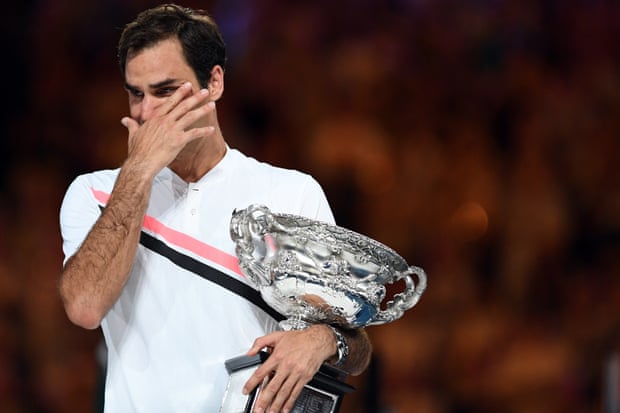Roger Federer had to stop playing professional tennis at some point. Here is a man who was winning grand slam tournaments before the iPhone was invented, while Tony Blair was still a very popular prime minister, and who first won Wimbledon two months after Carlos Alcaraz was born.

And yet the news that Federer intends to retire now at the ludicrously advanced age of 41 still feels like a shock, an oversight, a rumour that got out of hand. Is everyone sure about this?
It is always tempting when a champion leaves the stage to announce that we will not see their like again, that the book is now closed. It is also tempting to overdo the mawkish viking funeral stuff, to drown in sickly-sweetness, to transform every departure into a tug on the sleeve from Paddington Bear, to conclude that the sporting life really will never be the same again.
On this occasion both of these responses seem appropriate. Federer’s retirement certainly brings the end of one shared span a little closer. There has never been a period of dominance in any global sport quite like the Federer-Nadal-Djokovic tripod of power.
At the same time his departure also puts an end note on a more personal era, because even in this grand company Federer was the outstanding presence, the greatest player in the greatest time in men’s tennis. And by extension, and without any reasonable cause for argument – the word reasonable must cover a lot of ground here – the greatest tennis player ever.
It is a measure of the brilliance of Nadal and Djokovic that both now shade Federer on the basic tally of grand slam wins. Nadal’s invincibility at Roland Garros is the backbone of his 22 titles. Djokovic is a fellow all-court master and one ahead on 21. As a triple-godhead they have been the most irresistible source of entertainment, income and basic relentlessness, circling the sporting globe like mobile one-man city-states. What is it with these guys? Do they ever weary of seeing their reflection on that pewter surface?
Apparently not. Juan Carlos Ferrero won the French Open in May 2003, the last grand slam tournament of the old world. Federer, a year younger, won his own first at Wimbledon a month later and within five years would win 12 out of 18 from a standing start. Before long Nadal had joined him. Across the intervening years up to Wimbledon this summer Federer, Nadal and Djokovic have dominated the sport in an astonishing pitch of shared annihilation.

Djokovic is 35 now, still in peak condition but a little distracted by Covid stuff, culture war noise and generally being a kind of magic energy truther. Nadal is 36 and held together with twine, staples and glue. With the retirement also of Serena Williams, there is undeniably a sense that something is ending, the time of giants passing.
And yes, Federer really was the best of them. We know this because Nadal and Djokovic were great enough to make this such a point of fevered discussion, and to elevate every contest along the way, producing such a wonderfully more-ish contrast of style, manner and execution, the same greats playing the same game in the same space, but in a way that somehow never really felt the same.
And with Federer greatness was as much about style and form and texture. There was a sense in his talent of something that never quite reached its end point. Even at its most concentrated pitch one never felt one got to the limits of what Federer might do. There is probably still a bit in there, Rog, if you ever feel like giving it another go.
Even in defeat this was like watching some perfectly geared high-spec machine purring through its paces. Federer does not lose. He regroups. At his best there was a sense of genuine ultimacy, of sport as good as sport gets.
His backhand was frankly ridiculous, overblown, and hilariously good. This, one thought, watching that thing – the flex of the knee, the flourish of the wrist – is a kind of artefact, a European cultural treasure, like a Bach cantata or a complete acorn-fed Iberian ham, the kind of backhand a power-crazed Bond super villain might try to steal from its laser-guarded case and transport to the moon.
SOURCE: Conay Ronay
